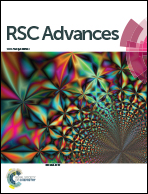Structural analysis of metal-doped calcium oxalate†
Abstract
Calcium oxalate crystals are the most common biominerals found in plants. They also make their presence known as painful kidney stones in humans and animals. Their function in plants is extraordinarily versatile and encompasses calcium storage and defense mechanisms against herbivores and detoxification processes. Since plants containing calcium oxalate crystals are often exposed to metallic environments, we studied the interaction of such environmental metals with calcium oxalate in vitro. We showed that selected metals are indeed incorporated into synthetic calcium oxalate, and in a manner that depends on their ionic radius when precipitated in solution. One such mechanism of incorporation is based on the replacement of calcium ions by other metal cations within the host unit cell. The unit cell of calcium oxalate expands when incorporating elements with larger atomic radii and shrinks when doped with elements possessing ionic radii smaller than that of calcium. In this systematic study, metal-doped calcium oxalate crystals were characterized by means of high-resolution synchrotron X-ray powder diffraction, energy-dispersive X-ray spectroscopy, inductively coupled plasma atomic emission spectroscopy, and transmission electron microscopy. Better understanding of metal incorporation into mineral hosts might lead to ways of developing new and more efficient sorbent materials for detoxification processes.


 Please wait while we load your content...
Please wait while we load your content...